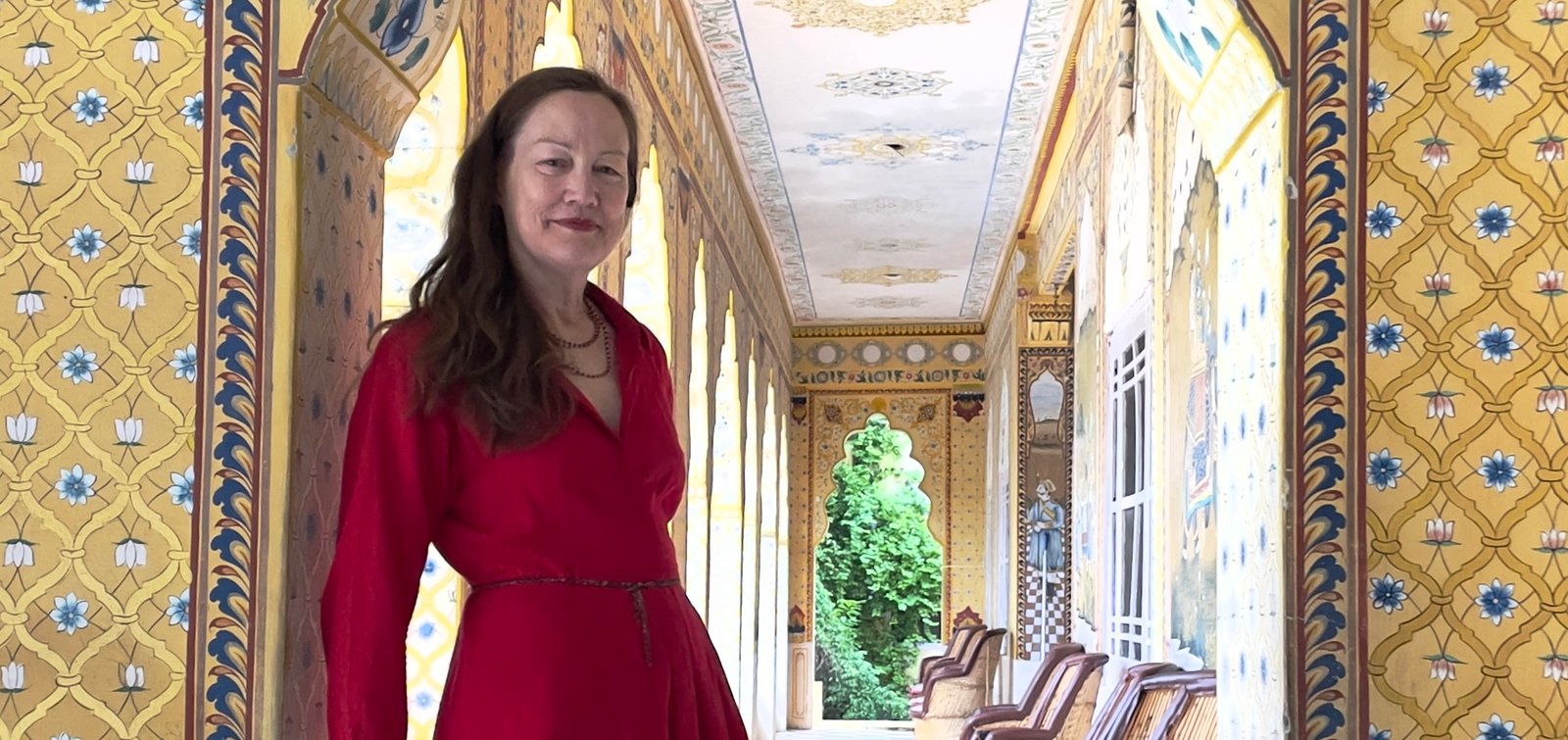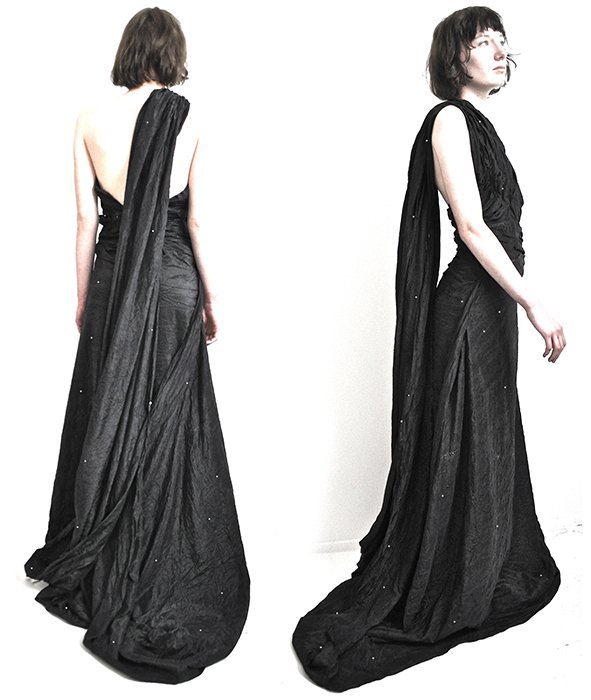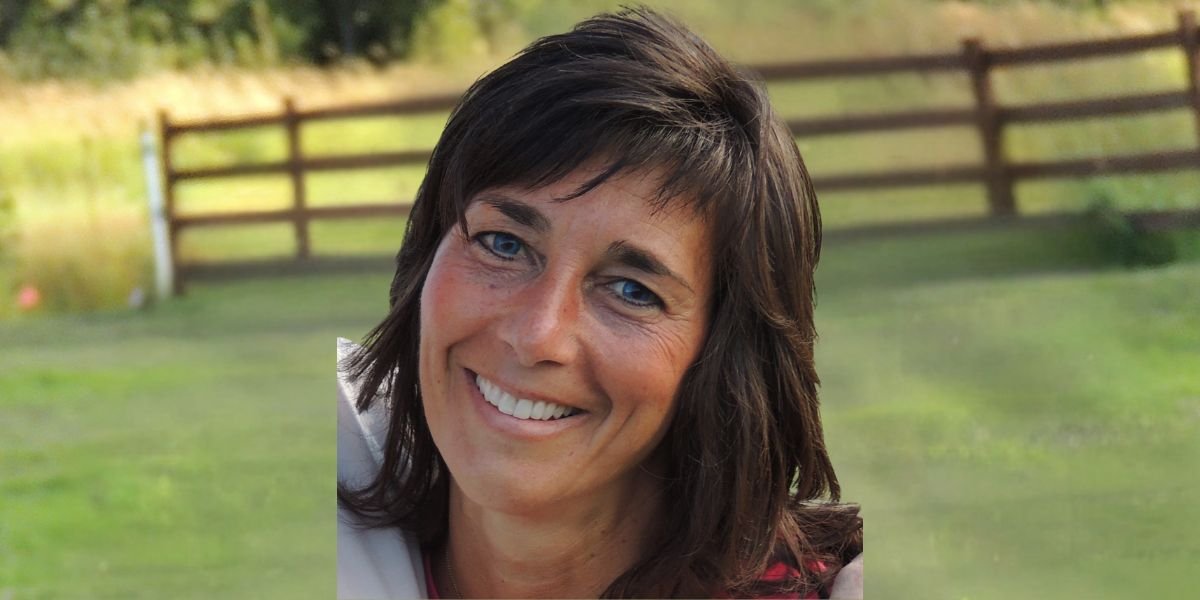From Textiles to Sculpture – Claire Joseph’s Creative Odyssey

A Designer’s Journey Through Collaborative Art, High Fashion, and Bold Innovation
In this interview, Claire Joseph discusses her innovative spiral draping technique, collaborations with iconic artists, and the seamless fusion of art and fashion that defines her boundary-pushing collections.
Claire Joseph is a designer whose work transcends traditional boundaries between fashion, art, and architecture. Her groundbreaking techniques, such as her renowned spiral draping method, challenge the norms of tailoring, infusing her garments with both architectural complexity and effortless wearability. With a background deeply rooted in textile innovation and a career shaped by collaborations with fashion icons like Romeo Gigli and Alexander McQueen, Claire continues to push the envelope of design. Her creations blend technical precision with artistic vision, offering a unique aesthetic that is at once avant-garde and deeply personal.
Joseph’s artistry spans beyond fashion, encompassing collaborations with renowned visual artists like Betye Saar, Banksy, and Paul Insect. These partnerships have expanded her creative horizons, allowing her to explore new dimensions in her work, from textiles to sculpture. Her ability to weave these diverse practices together is a testament to her versatility and vision, cementing her place as an influential force in contemporary design. Claire Joseph’s creations not only captivate on the red carpet but also inspire through their thoughtful craftsmanship and exploration of form, color, and texture.
Your spiral draping technique is central to your designs. What initially drew you to explore this architectural method, and how does it transform the way garments conform to the body compared to traditional tailoring?
When I was a child, my mother studied design at University where her visiting professor was Isamu Noguchi. Her assignment was to build a spiral, metal-based Cyclone table, using an entirely original structure. I helped my mother build it, but it was a bit of a flop — often coming unscrewed and slumping over. We kept this side table growing up, so I was able to revisit this spiral problem every time I put a glass down in the den. Traditional tailoring uses multiple pieces and layers to achieve structure. Spirals sit on their structure, holding things up or collapsing, depending on how you fit them together.

Charles James’ influence is evident in your work, having been mentored by one of his protégés. How has his legacy of complex draping shaped your designs, and what innovations have you introduced to this technique over the years?
Shout out to Michael Viktor Butler. My draping teacher enthralled me with such wonderful stories of a young Charles James ripping apart intricate dresses in dusty French warehouses, studying the endless layers and shapes of the gowns. Some of his dresses have 10+ layers. I was obsessed with using complex materials and layering which is hard work, and this led me to develop methods to get shapes and effects with minimum effort, using cantilevering and buttressing through the grain of the fabric — as opposed to complex seams and reinforced layering.
The Spiral Collection is known for blending intricate cutting with a minimalist aesthetic. How do you maintain the balance between architectural complexity and the relaxed, everyday elegance your pieces are known for?
The fabric’s structure holds its complexities and limitations. Clothing design follows the fabric’s inherent capability. I began my career as a tailor – sewing was not easy for me, and effort affects production output. In short, I sit down at the machine, and design garments that help keep the sewer happy. I sometimes cut full dresses out of one piece of fabric, to minimize effort while keeping the process thoughtful. I think about what makes people obsess over an object? For me, it is an ease or flow. I believe this should extend to the cutter, sewer, finisher, production manager, buyer, and ability to wear the garment.
You’ve worked with renowned designers like Romeo Gigli and Alexander McQueen. What was it like leading Gigli’s hand-dye and textile research studio, and how did those experiences influence your approach to colour, fabric, and texture in your collections?
Romeo Gigli is a textile genius and world-class colourist. I was influenced primarily by his natural ability to move towards the most beautiful, elegant forms, always telling a story. He taught me the importance of a clear theme that comes from within. He has an ease of knowledge that lulls you into his aesthetic. He gave us autonomy and freedom to create. Fashion should feel good – the whole process should make you “ooo and ah” and I learned this first-hand from Romeo.
Collaborating with artists like Betye Saar on her Shadow Song series and later working with figures like Banksy and Paul Insect must have been transformative. How has working with visual artists impacted your design process and artistic vision?
These collaborations encouraged me to jump into the abyss, trust people and their personal navigations, illusions, delusions, and re-writes. I became fascinated by the process being the final result – instead of the end product, especially when it comes to environmental, social, and street art. Visual artists have vision, sometimes planning projects for 3-4 years. The discipline is extraordinary, while we often had no idea what we were doing; some didn’t even want to know. I learned to depend on not knowing what I’m doing.
You’ve designed gowns for major red-carpet events like the Oscars, Emmys, and Golden Globes. How does designing for such high-profile events differ from creating pieces for your regular clientele, and what challenges or creative freedoms come with these projects?
The joy of celebrating personal or industry achievements on the red carpet is similar to a wedding or special event, just more public. The main difference is that the celebrators need to have impact on the small screen, so they can be a bit more glitzy or provocative.
As both a designer and a multi-disciplinary artist working across textiles, painting, and sculpture, how do your various artistic practices influence each other, and how do they collectively contribute to the creative narrative behind your work?
I do not feel constrained by choice of technique or medium, and I am most productive when I’m doing many different things at once. I love that colour is universal to all disciplines, and I would say that I am a colourist at my core. For me, design and art are two different things. Art, I make for myself. Design, I do for everyone. The narrative appears when the same elements pop up in different projects, mediums, and create patterns.
What are you working on?
Two years ago, I was approached by R D Traders in Mumbai, to do my sewing production. I had worked with them in the 90s when I was with Romeo Gigli, so we know each other. In the last 18 months I have been in India 3 times, exploring the culture, collecting fabrics, and developing garment production. I am working with patterns and styles from the 1980s to the present. It’s a new freedom for me to not be responsible for pattern grading, cutting, sewing, finishing, etc., and I love collaborating with artisans and masters, developing new methods.












